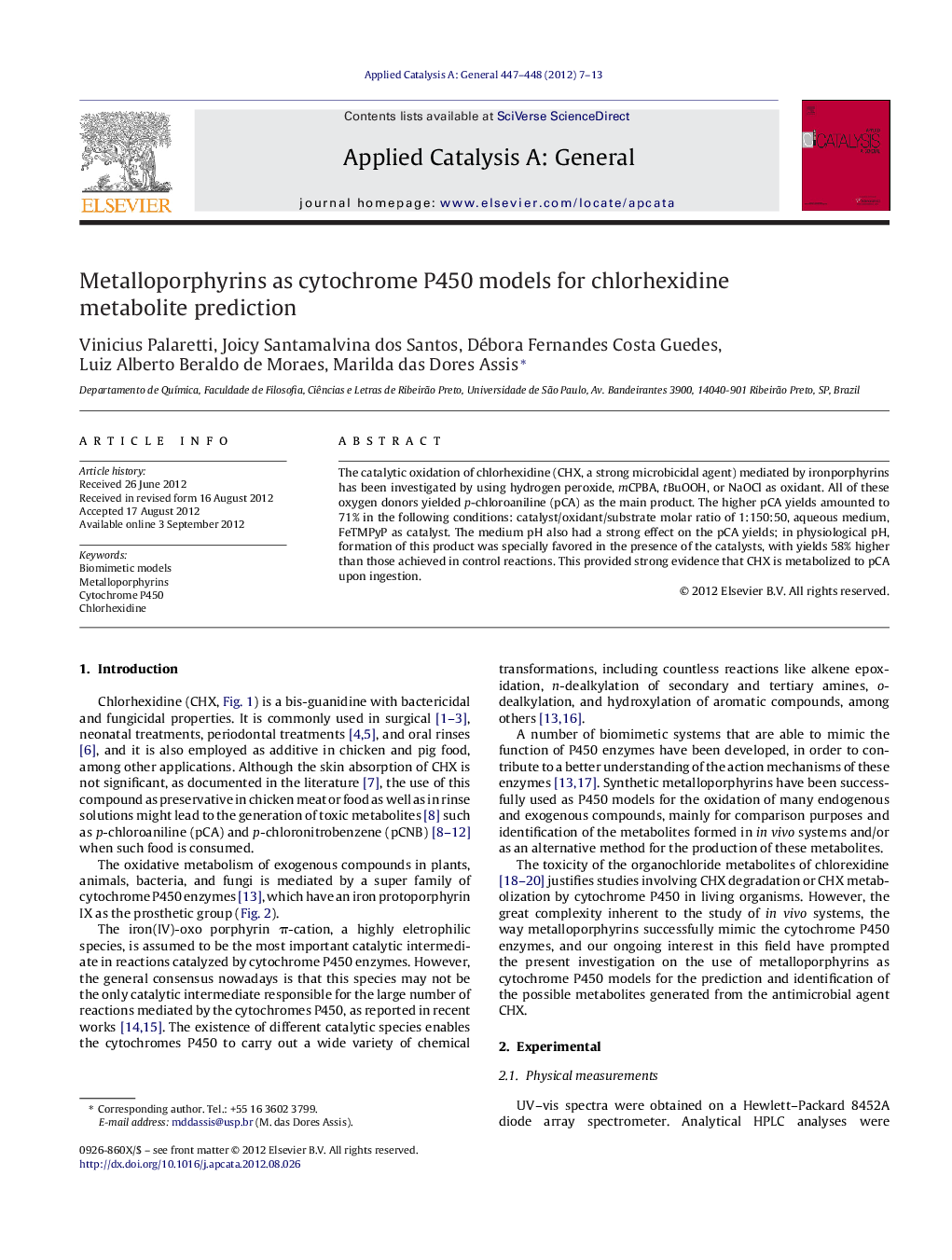| کد مقاله | کد نشریه | سال انتشار | مقاله انگلیسی | نسخه تمام متن |
|---|---|---|---|---|
| 40613 | 45860 | 2012 | 7 صفحه PDF | دانلود رایگان |

The catalytic oxidation of chlorhexidine (CHX, a strong microbicidal agent) mediated by ironporphyrins has been investigated by using hydrogen peroxide, mCPBA, tBuOOH, or NaOCl as oxidant. All of these oxygen donors yielded p-chloroaniline (pCA) as the main product. The higher pCA yields amounted to 71% in the following conditions: catalyst/oxidant/substrate molar ratio of 1:150:50, aqueous medium, FeTMPyP as catalyst. The medium pH also had a strong effect on the pCA yields; in physiological pH, formation of this product was specially favored in the presence of the catalysts, with yields 58% higher than those achieved in control reactions. This provided strong evidence that CHX is metabolized to pCA upon ingestion.
Figure optionsDownload high-quality image (68 K)Download as PowerPoint slideHighlights
► Chlorhexidine (CHX) is prone to degradation in the presence of metalloporphyrins.
► p-Chloroaniline (pCA) is the main product from CHX catalytic degradation.
► The results show the strong possibility of pCA formation when CHX is ingested.
Journal: Applied Catalysis A: General - Volumes 447–448, 7 December 2012, Pages 7–13